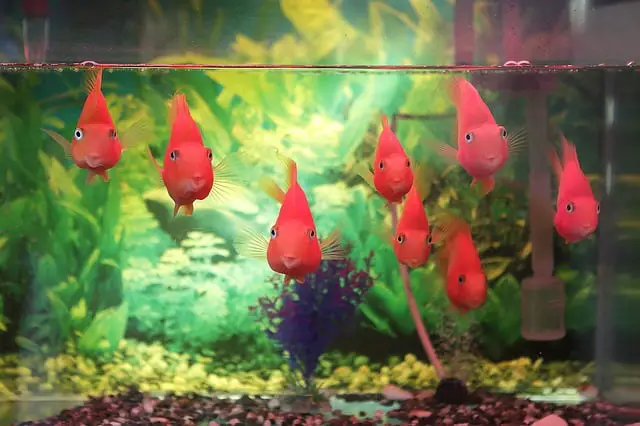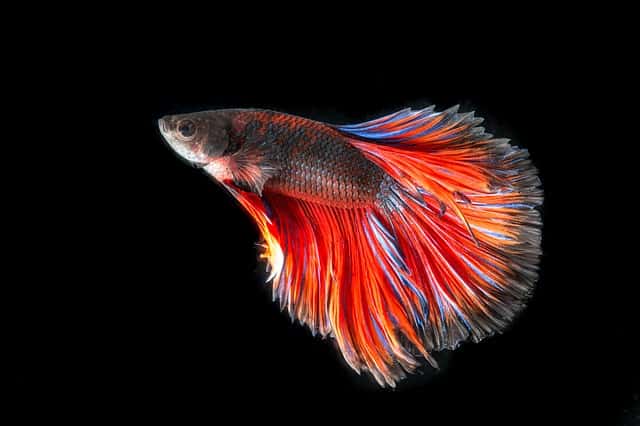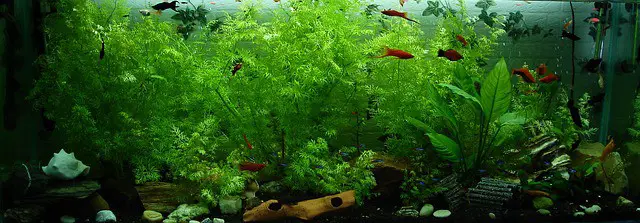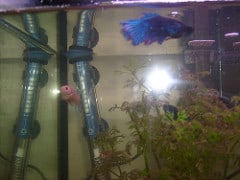You might notice when you go to an aquarium store that some tanks don’t have much for substrate and then there are some that are filled right up with substrate and plants. There are many reasons why you would want to either have or not have anything on the bottom of your tank.
The pros and cons of a bare bottom tank include (but are not limited to) unobstructed view; increased flow; easier to clean; water quality; replicates natural environment; harbours beneficial bacteria; takes up space; and so on.
As you can see there are many reasons for the discussion on what the pros and cons are in having a bare bottom tank. When you delve into the aquarium hobby a bit deeper, you start to question things like this, especially as you expand your collections of tanks and species. Some fish might prefer a bare bottom tank whereas others may not.
Bare bottom tanks are typically used for larger fish, much larger aquariums, delicate fish, rare fish, breeding tanks, rearing tanks, hospital tanks, quarantine tanks, etc. In this article, we will go over what I think are the pros and cons for a bare bottom tank and hopefully, I am able to help you decide on what will work best for your tank setup. Let’s get right to it.
The following pros and cons are not listed in order of importance but rather how they randomly came to mind.
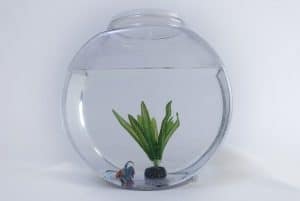
Pros of Having a Bare Bottom Tank
- Unobstructed view of fish. One of the biggest joys of owning an aquarium is to be able to watch your fish. It only makes sense that the less you have in the tank the more you can see your beautiful fish.
- Increased water flow. With less materials to obstruct the water the better it can flow throughout your tank. This means water is circulating better for filtration and heat.
- Dose with medication without fear of meds killing off bacteria in substrate or being trapped in substrate longer than it should be. Of course, if you have a sick tank, you shouldn’t have any substrate. Some people don’t have a running sick or quarantine tank, however, and end up having to medicate in their sole aquarium.
- So much easier to clean the excess poop and food on the tank’s bottom. This is obviously easier than trying to vacuum substrate. It’s more efficient because with a bare bottom, you see exactly what you need to siphon up. When you have a substrate, you are poking around blind to where all the excess poop and food are in the bottom.
- Easier for fish to locate food that has dropped to the bottom of the tank. Sometimes food gets past the fish and ends up embedding into gravel and is wasted. If the tank bottom was bare, the fish could easily locate this food and consume it.
- Water quality can be easier to maintain if you stick to a rigid schedule with water changes.
- Not having rocks, logs and branches means fish won’t get injured scraping on them or getting caught. Sometimes fins get damaged when fish are being chased or get startled. The less you have in the tank, the less chance of this happening.
Cons of Having a Bare Bottom Tank
- The biggest con (in my mind) is that without a substrate, there is no place on the bottom of the tank for beneficial nitrifying bacteria to grow. When a substrate is provided, this is typically the largest and best area of beneficial bacteria to grow. This means you will be counting on filtration to harbour your bacteria. This can be tricky and is not always the best situation, especially for a hobbyist with minimal experience.
- More work maintaining an aquarium that doesn’t have a substrate as there won’t be enough beneficial bacteria to help break down the biological components in the water, being ammonia and nitrites. This point goes along with my first one. Since there probably won’t be as much beneficial bacteria in your tank, you will need to be on top of things, such as water changes and testing the water parameters. If you don’t, the filtration with the existing bacteria could get over run and then you will have fish dying.
- Water quality is also a con when the tank has a bare bottom. This point goes with my previous one of tank maintenance. Water quality can suffer without a substrate.
- Depending on how much substrate is in the tank, it can take away quite a bit of space in the tank that could have been water for the fish to move around in. It won’t be a ton of space but it is space your fish could be moving around in. This applies to having too many decorations as well.
- If you have a sand bottom, you might not be able to run a powerhead close to the sand without having it all be blown somewhere else in the tank. This doesn’t really apply to gravel, but sand could be a problem if you are running powerheads lower in the aquarium.
- Some fish like to move around (sift) gravel and sand. This can be a con or pro. The con would be the mess of fish moving around the substrate. In marine tanks, there are a lot of fish that enjoy moving sand and gravel around. They like to build a hiding place. Not having a substrate could potentially affect how happy your fish are.
- Falling rock can more easily crack the bottom of a tank if it falls within the aquarium when it has a bare bottom. For this reason, it is extremely important to either secure the rock (with epoxy) to other rocks or don’t pile up rocks so they have the chance of falling.
- Sanded or gravel bottom looks more natural than a glass bottom. Some fish like to move around sand or gravel. The con point here would be that, by not having a substrate, the fish will feel more stressed out because the tank does not resemble their natural habitat.
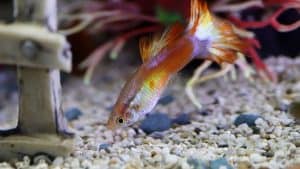
Ways to Make a Bare Bottom Tank Work
- If you have a bare bottom fish tank, consider adding a sponge filter inside the aquarium even when using a mechanical filter. The sponge filter will be another place for beneficial bacteria to grow.
- Consider using a large canister filter as canisters will have much more room for the beneficial bacteria to grow.
- Clean your filtration less often. Make sure to use tank water to clean out the filter. Your filtration is going to be the tank’s heart and soul so there is no room to mess this up.
- Perform weekly water changes and test the water parameters every week. By doing this, you will capture any potential issues much quicker and be able to hopefully resolve said issue.
- Keep the amount of fish in the tank to a minimum until you have much more experience and a better feel for what is possible.
That’s just a few things to consider if you want to run a bare bottom aquarium. The most important thing I think to make this a success is to just provide that weekly maintenance. There is no room for being lazy or going on vacation for 2 to 3 weeks without someone checking up on the fish. A tank with substrate is a bit more forgiving in my experience.
Are Bare Bottom Tanks Better Thank Tanks with a Substrate?
Lastly, I think it’s important to touch on this question. Are bare bottom tanks better than a tank with substrate?
I would say yes and no.
It all depends on what kind of tank you are setting up and what your skill level is in this hobby.
If you are going to have freshwater stingrays in a 500-gallon or larger tank, you probably won’t want to have any sand or gravel. Can you imagine trying to clean that? It’s just not necessary in this type of aquarium.
Maybe you want to run a 40-gallon tank with a few goldfish. I wouldn’t bother putting any substrate in this tank.
If you are going to run a planted tank with a large school of Neon Tetras, then yes use substrate.
There are so many variables to consider when making this decision. If you take your time researching the type of fish you want to have as pets and take all my advice in this article into consideration, I trust you will make the right choice. Good luck with whichever way you decide to go.
Related Posts
Do Planted Tanks Need Filters?
What is a 40Gallon Breeder Tank?
Should Aquarium Filter Always be on?
What is the Most Low Maintenance Fish? (For Aquarium)



